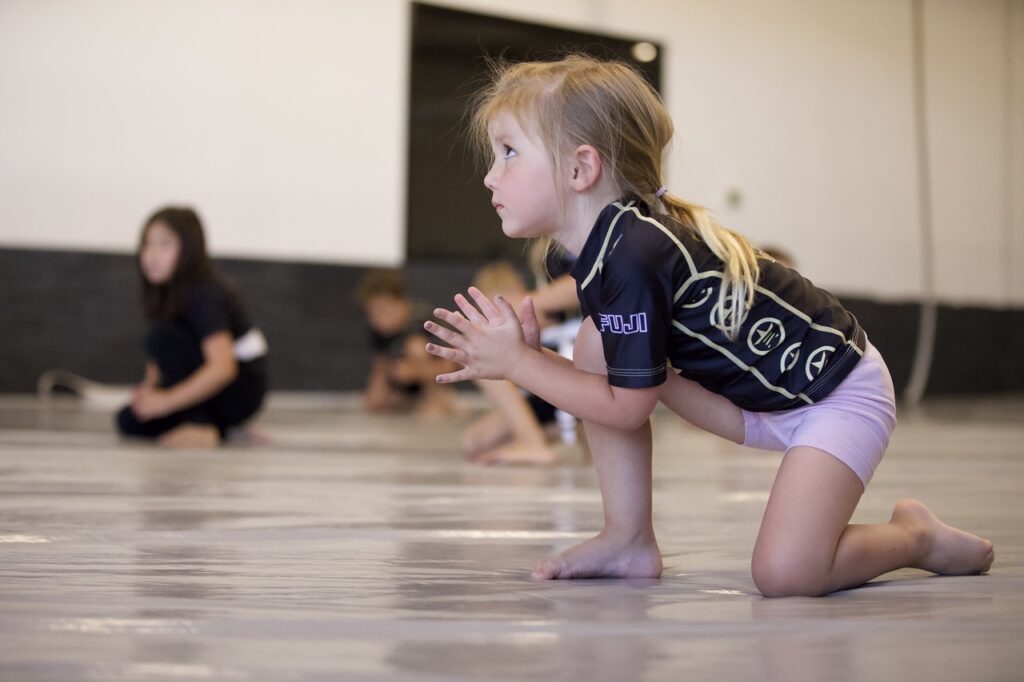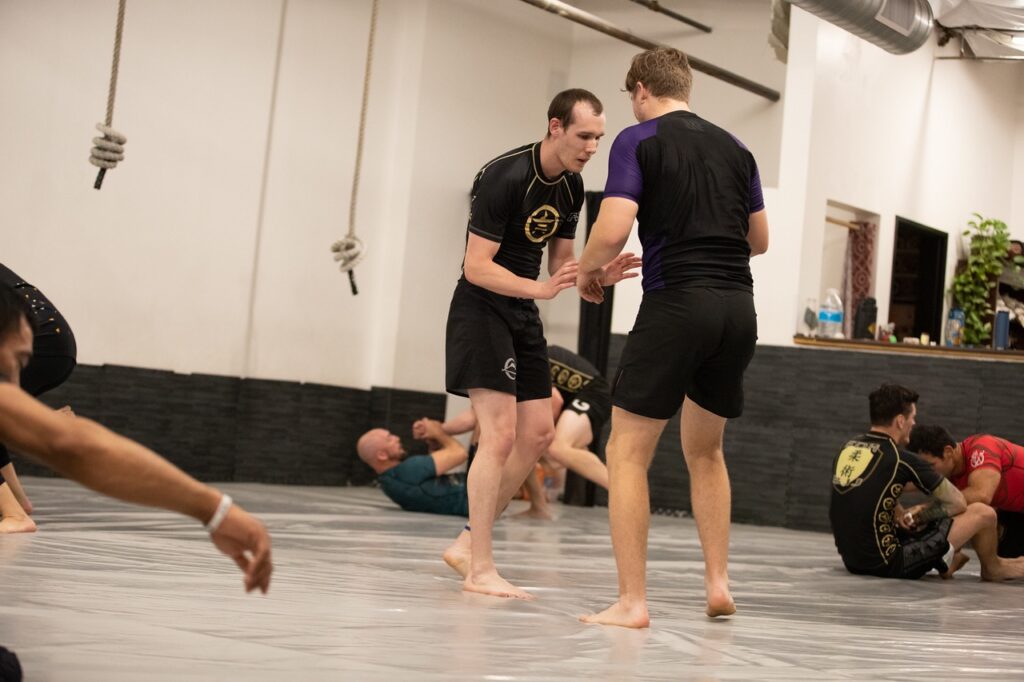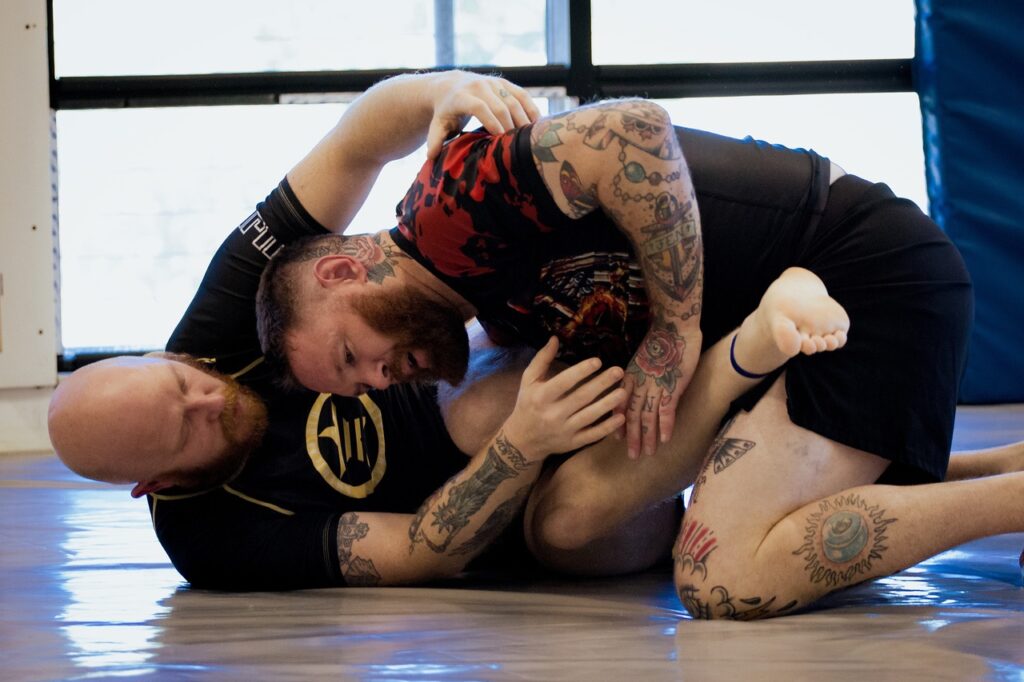Transitioning from gi to no-gi Brazilian Jiu-Jitsu (BJJ) involves several adjustments in technique, strategy, and mindset due to the differences in attire and grips. Here are the key aspects of this transition:
Differences in Attire
Gi: The gi (kimono) includes a jacket, pants, and a belt, which provides numerous grip opportunities for both offensive and defensive techniques.No-Gi: Practitioners wear a rash guard and shorts, eliminating the use of clothing for grips. Students can also wear gi pants for practice sessions. Please wear the gi belt for stripes and belt promotions during the summer session.

Technical Adjustments
Grips and Control: In gi, grips on the collar, sleeves, and pants are fundamental. No-gi requires more reliance on body grips, such as underhooks, overhooks, and wrist control, since there are no gi grips available.Friction: No-gi tends to be faster-paced because the lack of friction from the gi and increased sweat make it harder to maintain control, leading to more scrambles and dynamic movement.Submissions: Certain submissions and sweeps that rely heavily on gi grips, like collar chokes and spider guard sweeps, are not applicable in no-gi. Instead, practitioners focus more on techniques that don’t require cloth grips.
Strategic Adjustments
Speed and Athleticism: No-gi often demands higher levels of athleticism and speed due to the decreased friction and grip options, which results in faster transitions and more explosive movements.Positioning and Pressure: Controlling positions in no-gi can be more challenging, necessitating tighter control and better body mechanics to prevent escapes.Guard Playing: Guards like spider guard or lasso guard, which depend on gi grips, are replaced by guards like butterfly guard, half guard, and variations of the open guard that rely more on hooks and underhooks.

Mindset Shifts
Adaptability: Practitioners must adapt their game to the absence of gi grips, which often involves developing a different set of techniques and refining those that are gi-independent.Defensive Awareness: Without the gi to slow down the pace, defensive awareness and reaction times need to be sharper to prevent submissions and positional losses.
Training and Drilling
Cross-Training: Many BJJ practitioners train both gi and no-gi to become well-rounded. This cross-training enhances their adaptability and overall grappling proficiency.Specific Drills: Practicing specific drills that focus on no-gi grips, positional control, and transitions helps in developing the necessary skills for effective no-gi grappling.

The transition from gi to no-gi BJJ can be challenging but also rewarding, as it broadens a practitioner’s skill set and adaptability. By focusing on the unique aspects of no-gi grappling and continuously refining techniques, practitioners can smoothly transition and excel in both styles.
